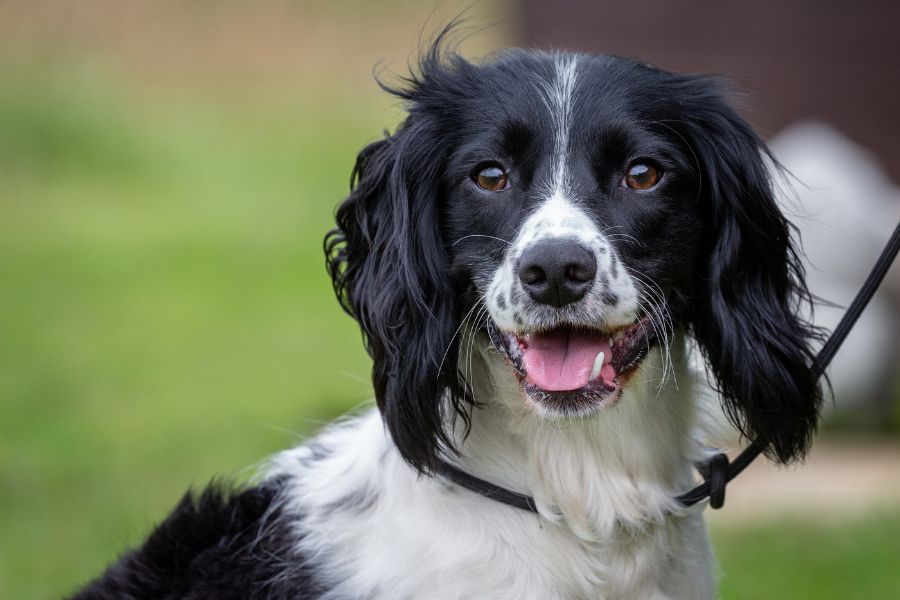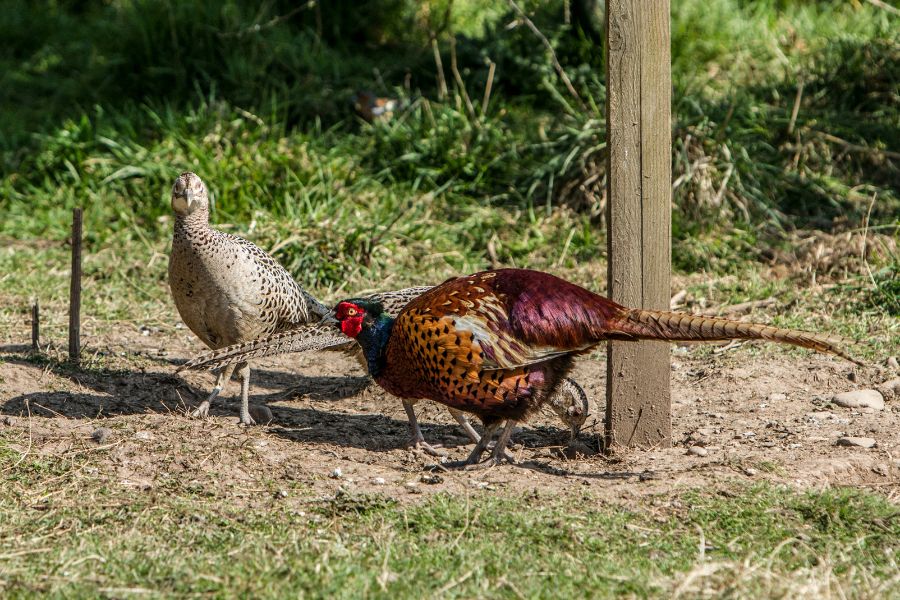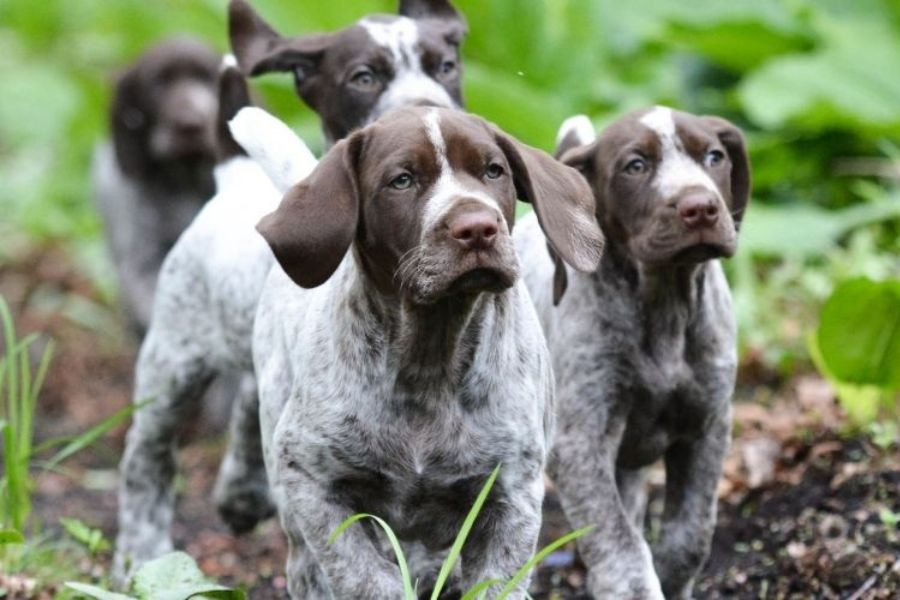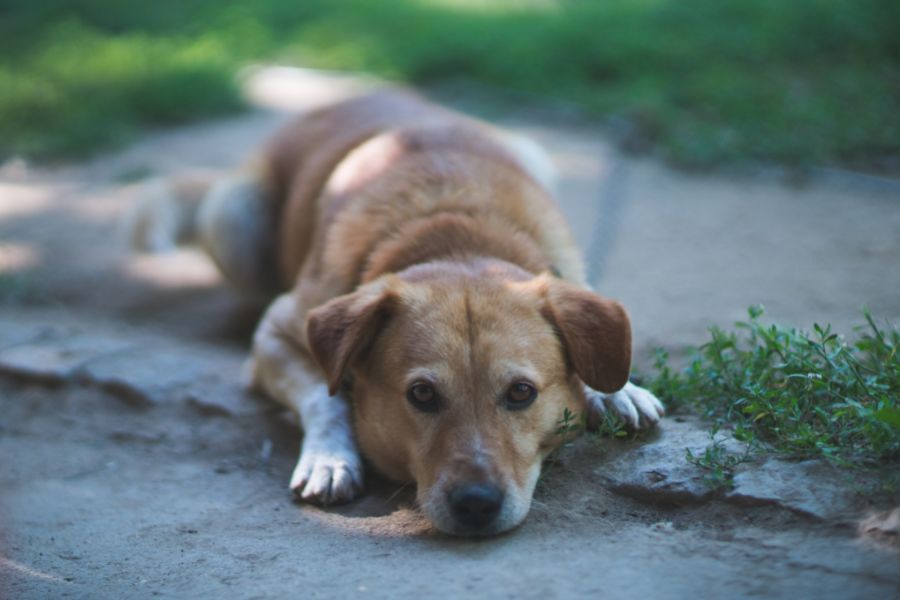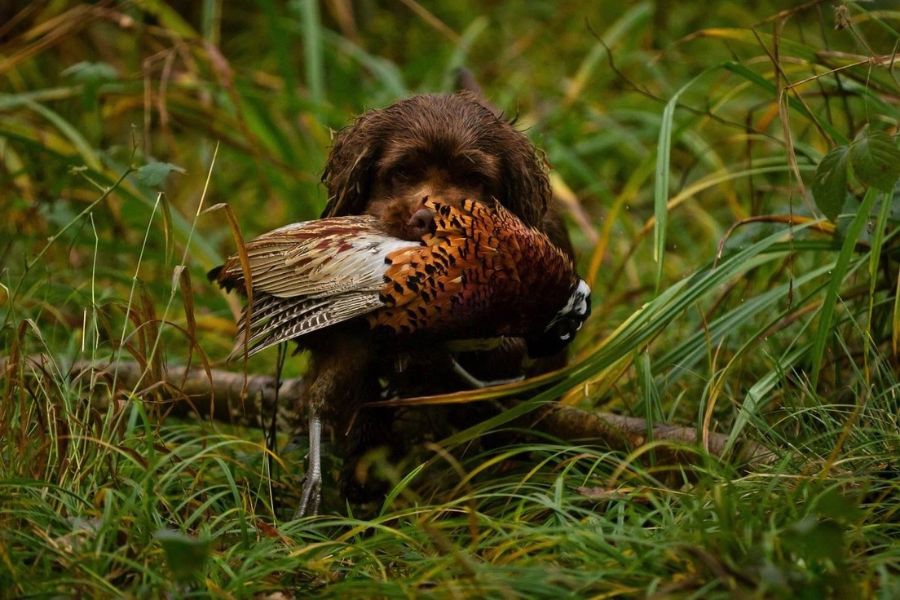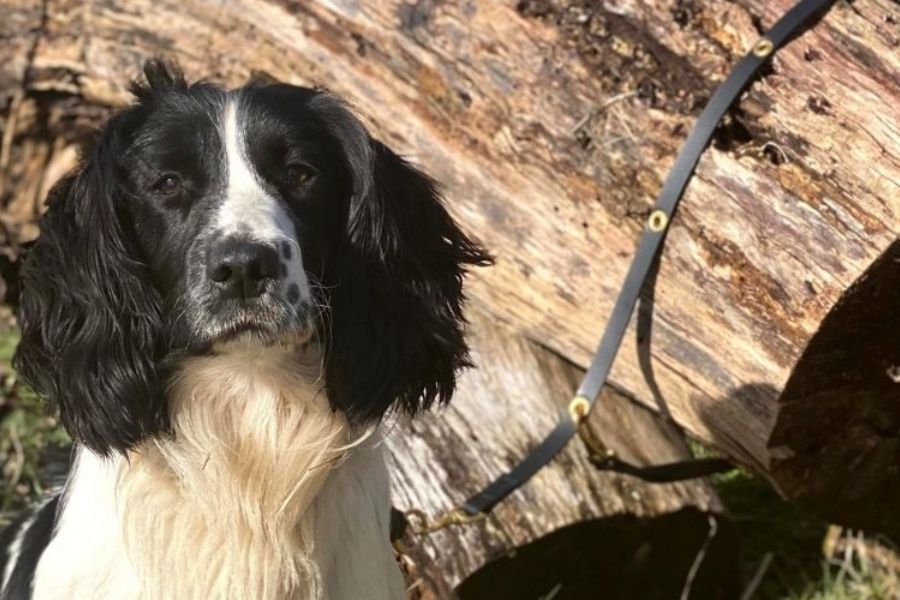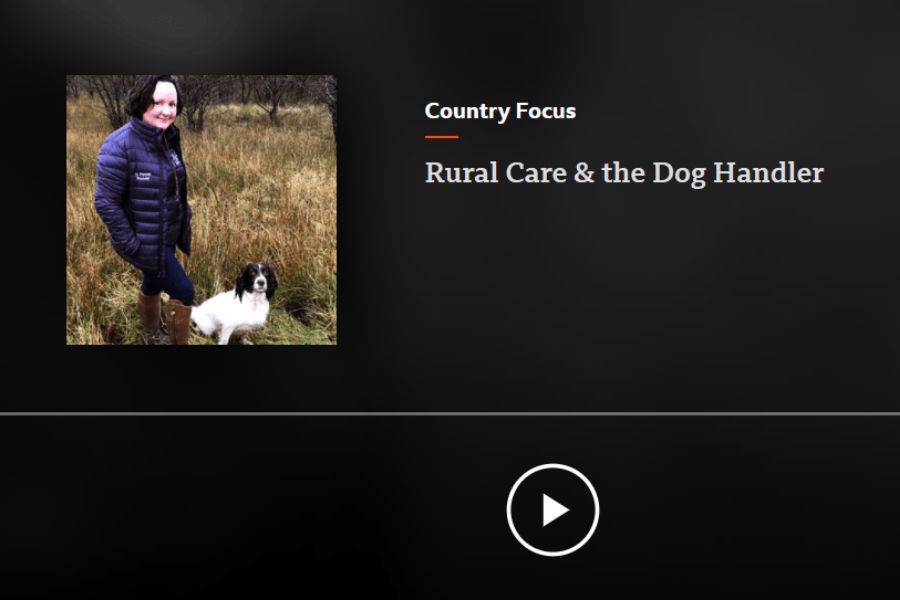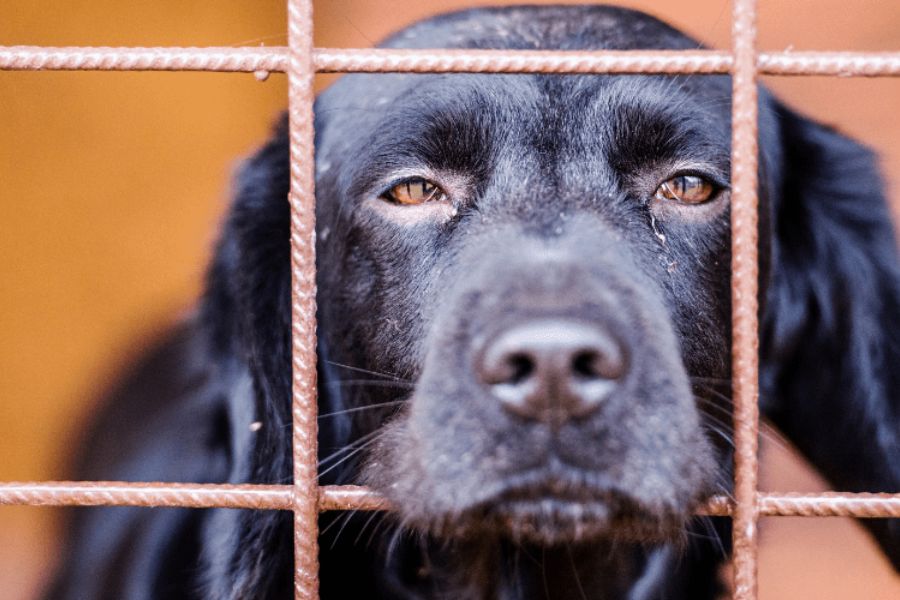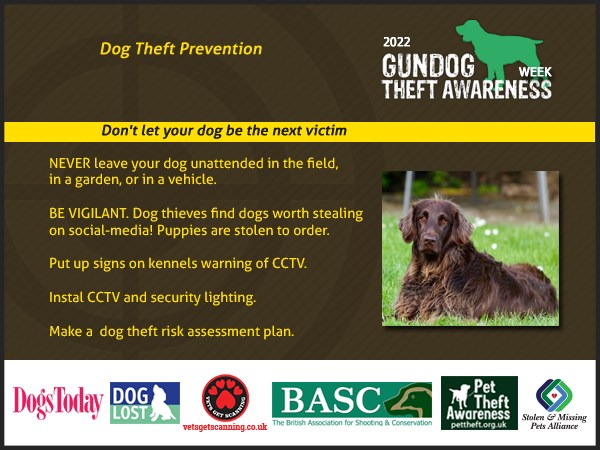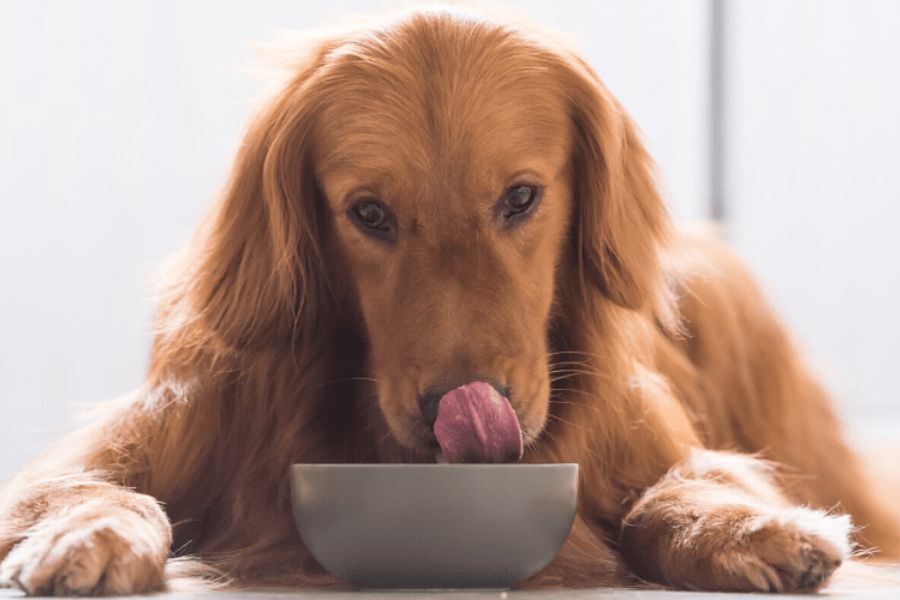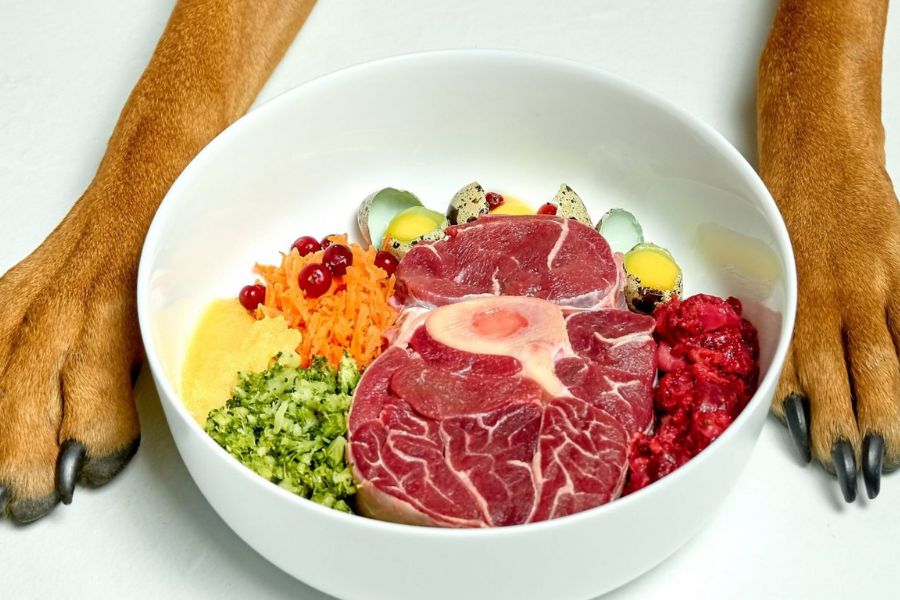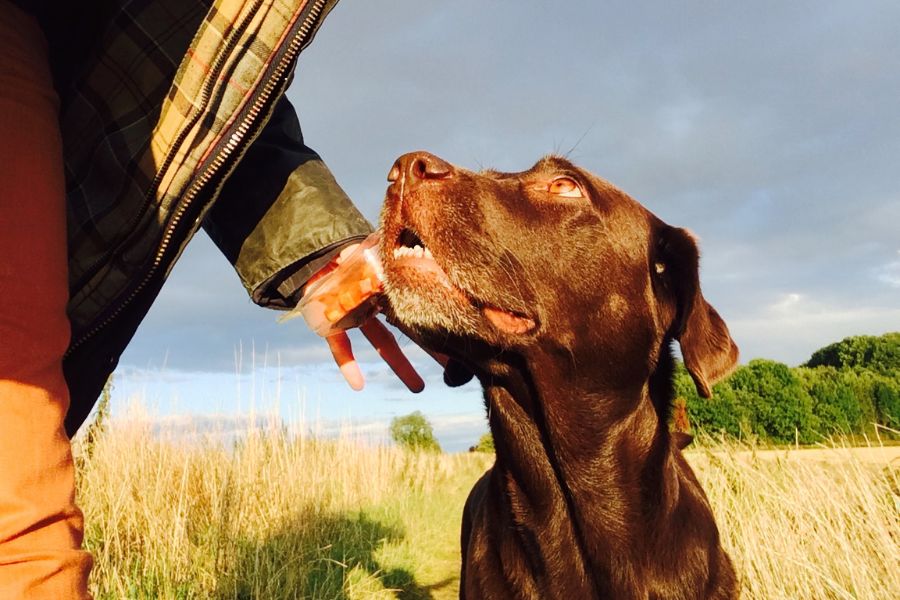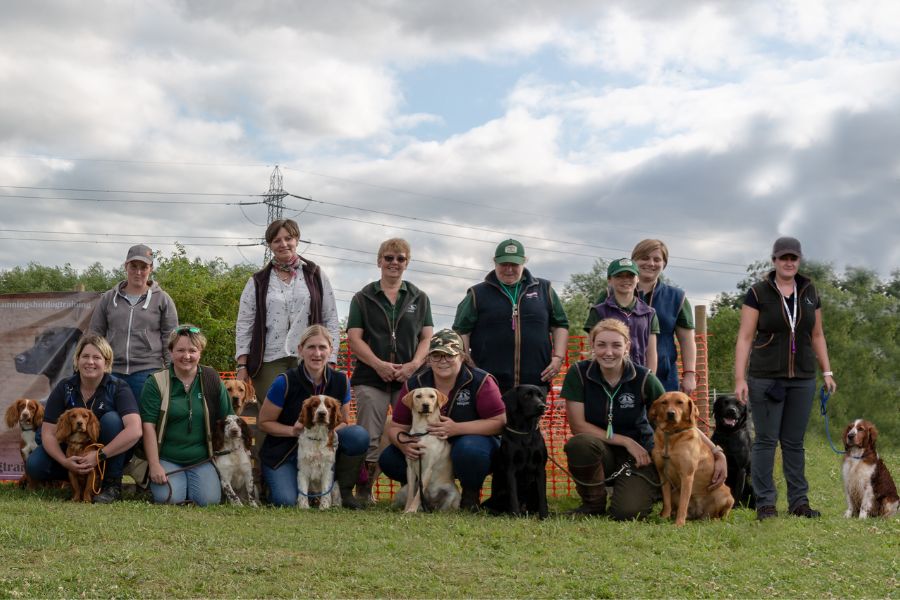Back in 2015, a group of women got together to create an online community, offering friendship advice and encouragement to other female working dog owners. Today the lady’s working dog group has developed into a community of over three and a half thousand m women worldwide. But it hasn’t all been a walk in the park. It was founded by Jo Perrott from her home in Cwmdare in the Cannon Valley, and who as a new handler with her dog Grace was looking for help and support at a time in her life when she really needed it
Jo Perrott
( sounds of Jo working grace ) Get on Grace. I want her to work the land in front of me. If we were out on an estate, she would be making sure that there weren’t any birds in front of us, or if they were birds and we were pushing them down towards the guns. So she constantly looks back to me. She’s looking at me for guidance which way I wanted to go, what I wanted to do, and making sure that she’s doing a good job of fleshing the birds down, away from us.
Caroline Evans BBC Radio 2 Wales
And she is doing a good job just got a nose to the ground.
In 2010, I was unexpectedly diagnosed with a brain tumour, they found it on a Saturday, very early hours in the morning and on Monday I had just six and a half-hour operation to remove it. I was left out of the hospital four days later, on Christmas Eve in 2010 with 48 staples in my head, all my hair missing and me wondering what had happened.
From the operation, I went on to become epileptic and started having fifth. So I spent a lot of time trying to get my head around the fact I was recovering from an illness I no longer had if that made sense. It caused me to have PTSD, I had severe anxiety, I became quite panicked because you always expect the threat to you to be an external threat. When you find out as an internal threat, and there was nothing you knew about it makes you very aware and very worried about a lot of things. I pulled myself a little bit back together.
And then, I was told that I had grown back, and I just really took my anxiety to a different level because now I was having to deal with an illness that was in my head, and was a type of brain tumour I had meant that they don’t touch unless they need to slow growth when it’s benign. Thankfully, I was told I had the best brilliant tumour you could have. And I basically became almost housebound, I could put on a brave face and go out for a little while but then I would need to get home, I would sit in restaurants and my back to the wall alert noises would frighten me and go really really bad so my dad said you need to get out. So growing up, we’d always hunted on horseback at 18 when I went off to get a job and stuff I sort of come away from the horses, but he continued he broke his back twice. And so he was told he couldn’t do that anymore and that’s when he started working fine as if he couldn’t hunt on horseback he was going to hand another way. So, when I was this bad my dad decided the best thing to do was to get me back out into the outdoors into the fresh air, and he just took me out on Interstate and he gave me this one and said get on with air just enjoy yourself and just have fun and I absolutely loved it I think on that day I walked 11 kilometres. I just enjoy being outdoors and the more I walked the more physical exercise I had the more My mind was wrapped up in making sure she was doing a job, more, I could forget about what I was suffering with.
Caroline Evans BBC Radio 2 Wales
Did you know that there were other women like you out there at the time because your group has grown to 1000s of women now?
Joanne Perrott
So when I went out on the shoot that my dad took me in I knew no one at first, there was another lady Fiona who was l really absolutely lovely to me, but it was mostly men, and I found over the years and the majority of men are absolutely wonderful and behaved very well in front of me and then as in every walk of life you had a minority who make you feel like you shouldn’t be there but it was a man’s sport.
So, I needed to find other women who had gone through teaching a dog to help me. But then, as the LWDG started growing, we started finding women who are more isolated, and we started finding women who hadn’t been on a shoot or an estate and never do intend to, but they bought a working breed like a spaniel or lab or Pointer, and they just needed help, because working dogs and pets they can be pets, but they’ve got it in their mind from the time they’re born to a job like grace now, although we stand in talk and she’s constantly watching the sky she’s looking for activity.
If somebody’s got a dog like grace in the house and they don’t keep them mentally stimulated. They’ll normally find challenges with them. If they’re not taught properly they will self hunt they will self-reward. And that’s when you get dogs that won’t come back, they will chase sheep they will do all these behaviours that we don’t want to see. So it’s really, really important if you have working dogs that you teach them working commands into dogs tend to narrow working them out in the field so that you can control them and you can have the best out of them. And now they can get the best out of you.
Caroline Evans BBC Radio 2 Wales
So are all the women that you support them online. How does it actually work?
Joanne Perrott
Yeah, we’re all online so we started as a Facebook group, and then we grew and then we realised we needed a little bit more help, I’m not a trainer, I’m working with the dogs going along just like everybody else’s.
So we started getting featured experts who would do a monthly masterclass online for us. And then, in 2019, we did our first live gundog day where we could all meet up, and 2020 was planned to be full of that because we changed the way we worked. Luckily, because we started online we could quite easily stay online. So now we do weekly group coaching sessions, live events online on zoom which can keep us all connected. So what started was me going. Can somebody tell me wants to my dog has become this global thing which
I’m immensely proud our brand remains to be proud of the community because there’s nothing that they can’t ask or nothing that they can’t say the group will guide them towards understanding more about their dogs rather than criticising them for not knowing and in the first place, which I really, really proud of because we’ve shown that you can build a community where people can become really good friends online without having to ever meet in person.
It’s not just about getting the dog to work perfectly, but it’s also about building your confidence where everything to do with the countryside.
I know there’s a lot of sort of no conflict but people are asked, Is there a place for rural sports in our country and your prayers really do think there is because a lot of natural habitats are kept for the purpose of recovering using this manner, and being out in the outdoors and working your dog, I think is probably as close as you’re going to get back to nature.
Like being out with working Grace, and as it switches it all off, just be me and her constant ‘conversation’ and just enjoy and being outdoors in all weathers
Caroline Evans BBC Radio 2 Wales
Jo Perrott and her dog grace, and later this month Jo is up for a triumph over adversity award in the
RURAL BUSINESS AWARD, and we certainly wish her all the best. That’s it for this week from me Caroline Evans, and the country for cars team. Thank you for listening, and stay safe.







